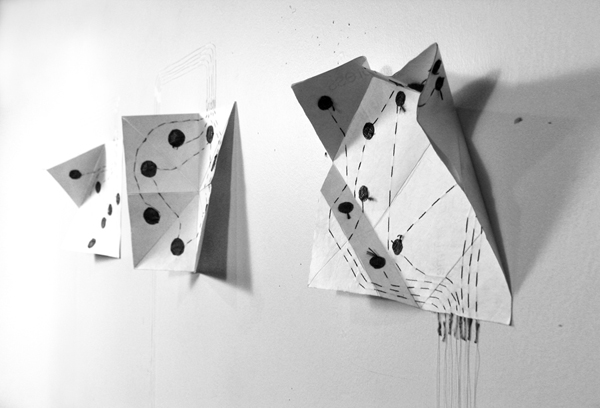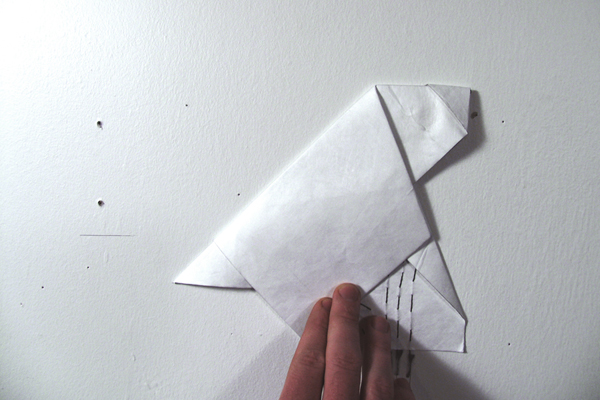User:Mirjam Dissel/notes tutorial graduation proposal: Difference between revisions
No edit summary |
No edit summary |
||
| Line 59: | Line 59: | ||
'''I do not specifically want to talk about the woman's body image, but more about conceptually designing against established rules''' (even though these rules were very different in other times and ages.) | '''I do not specifically want to talk about the woman's body image, but more about conceptually designing against established rules''' (even though these rules were very different in other times and ages.) | ||
<br> | <br> | ||
Patterns invite participations and rely on the user and is decided on their input. A dataset is generated on the spot which could be designed for a specific body or create a generic garment for every member of a group. The outcome could either be a piece that is specifically designed for you, but has 'runway features' and is thus unwearable (to show that also, not all runway outfits are ready for wearing). Or it could explore the human body in another way. Every woman has to live up to an idealistic image, fashion is designed for this woman. What if I want to show everybody for who they really are, but | Patterns invite participations and rely on the user and is decided on their input. A dataset is generated on the spot which could be designed for a specific body or create a generic garment for every member of a group. The outcome could either be a piece that is specifically designed for you, but has 'runway features' and is thus unwearable (to show that also, not all runway outfits are ready for wearing). Or it could explore the human body in another way. Every woman has to live up to an idealistic image, fashion is designed for this woman. What if I want to show everybody for who they really are, but as an outcome that it makes no difference to how it is aesthetically perceived, since what we think is beautiful is only such a subjective and unfair verdict depending on the era we live in. | ||
Put this up for discussion. | Put this up for discussion. | ||
Revision as of 19:28, 23 October 2011
Trying to find out what to do for my graduate proposal.
Keywords popping up by going through my work:
- mixing and matching/mashing
- collaboration
- provocation
- nostalgia
- reminiscence
- individual experience
- interpretations
- what happens inside your brain (manipulation?)
- reality vs.expectations/perception/lies
- generative & computational meets old fashioned fuzzy feeling
- contradictions
Very simple:
what do I like or would I like to do once?
- I like sewing and old fashioned craftsmanship
- I would like to make a programmed book (sewing patterns?)
- I would like to make an installation that is interactive
- I'm interested in image, photography and memory.
- Write down/record dreams. Bed linen installation. Dreams interwoven, touch each other, network of experiences (how to make universal for an audience?)
Talk w/ Steve, description of 3 works:
............scans of Steve's handwriting
Homework:
- Methodology. Notes
collectivity - how we choose + manual labour of choice
modes of organisation.
personal = value through personal involvement (make uniqueness visual)
My projects revolve around collectivity. I like to work with a collection, whether already present or made on the spot by participants. Next to collectivity, I like to work with individual fantasy and imagination next to a collaborative and collective memory. A key aspect in the projects is the role of choice. How do we choose? The manual labour that is involved in adding to, arranging or augmenting the collection in ways that are instinctual but mostly come from tradition and semiotics are a thing for me to play with and investigate. The personal perspective from this manual labour, sometimes craftsmanship, gives it value and uniqueness. I then deconstruct and rearrange the collection myself. The different ways of organizing this data become the final product. Or, the work consists of the (re)arrangements of others, as an interactive platform to continue from.
- Outline of possible future project
1.
As explained in my methodology my work comes forth from a collectivity, something ready made, contributed to by others. In this way I think I like patterns. Patterns as a DIY instruction for further assembly.
I am also inspired by tv shows about fashion design. Often people in Project Runway design skirts pants or dresses that have the models hips stand out, sometimes incredibly out of proportion. The comments the judges always have is "no woman would want to wear something that emphasizes her hips". The designer tries to explain their work conceptually, there is always a strong concept concerning the matching top or a strong opinion about not always wanting to make the model look beautiful or thin. This clash of opinions makes me think about the subject. We know the model is thin anyways, even with a gigantic balloon skirt on, we can still see it. And the clothing is made for the runway, not to hang in shops. Which rules should the designers obey?
This also happens in make over shows. One piece of clothing might be fit for an apple shape body, but not for a pear shaped one and we are all supposed to know this. There are mathematical rules of symmetry that apply to your appearance (your body, fashion, make up), when is it allowed to break these rules?
John Bock's fashion design can get out of hand, normal industry recycles itself after a while.
When the fashion designers in Project Runway explain his/her concept, and even before that, I often already like the outfit. But it is not commercial and I probably would not wear it. When did we go from big hips > fertility > procreation > good life = beautiful to NO EMPHASIS ON THE HIPS? In some poorer countries big women are still seen as aesthetically beautiful, for obvious reasons. After the industrial revolution and even in the past 50-100 years many things have changed in the western world and the need for children to look after you is decreasing.
I do not specifically want to talk about the woman's body image, but more about conceptually designing against established rules (even though these rules were very different in other times and ages.)
Patterns invite participations and rely on the user and is decided on their input. A dataset is generated on the spot which could be designed for a specific body or create a generic garment for every member of a group. The outcome could either be a piece that is specifically designed for you, but has 'runway features' and is thus unwearable (to show that also, not all runway outfits are ready for wearing). Or it could explore the human body in another way. Every woman has to live up to an idealistic image, fashion is designed for this woman. What if I want to show everybody for who they really are, but as an outcome that it makes no difference to how it is aesthetically perceived, since what we think is beautiful is only such a subjective and unfair verdict depending on the era we live in.
Put this up for discussion.
http://blip.tv/vernissagetv/john-bock-fashion-show-2691325
manual de landa soap bubbles, maquette architecture
2.
My dreams are a network. Each dream seems to be in chronological order, only when talking about them I realize that in fact things warp into another and everything is more like a circle with connections in the centre. Also in almost every dream there is a part that plays in my parents backyard or my grandma's backyard or house. While I'm dreaming I remember what I had dreamed about before and then I continue the current dream. I think it's incredible that there is an entire other world hidden inside my head, that during the day I can't reach, but while dreaming I can remember an entire dream I had maybe 10 years ago.
When I'm thinking about all of my dreams I imagine a big cloth on hanging on top of me and around me. It has dots for every dream and they can all be connected. When I'm dreaming the cloth or net closes and some of the dots can connect to each other, making a dream.
I have been looking into making connections. Pressing combinations of buttons to get different results.
Chord keyset (left hand) by Doug Engelbart, 1968

And a newer version by Infogrip (right hand), the BAT

Fold Loud, JooYoun Paek, 2007


P.S. take picture of Steve to make stationary out of because everything sounds better in Steve's presence.
